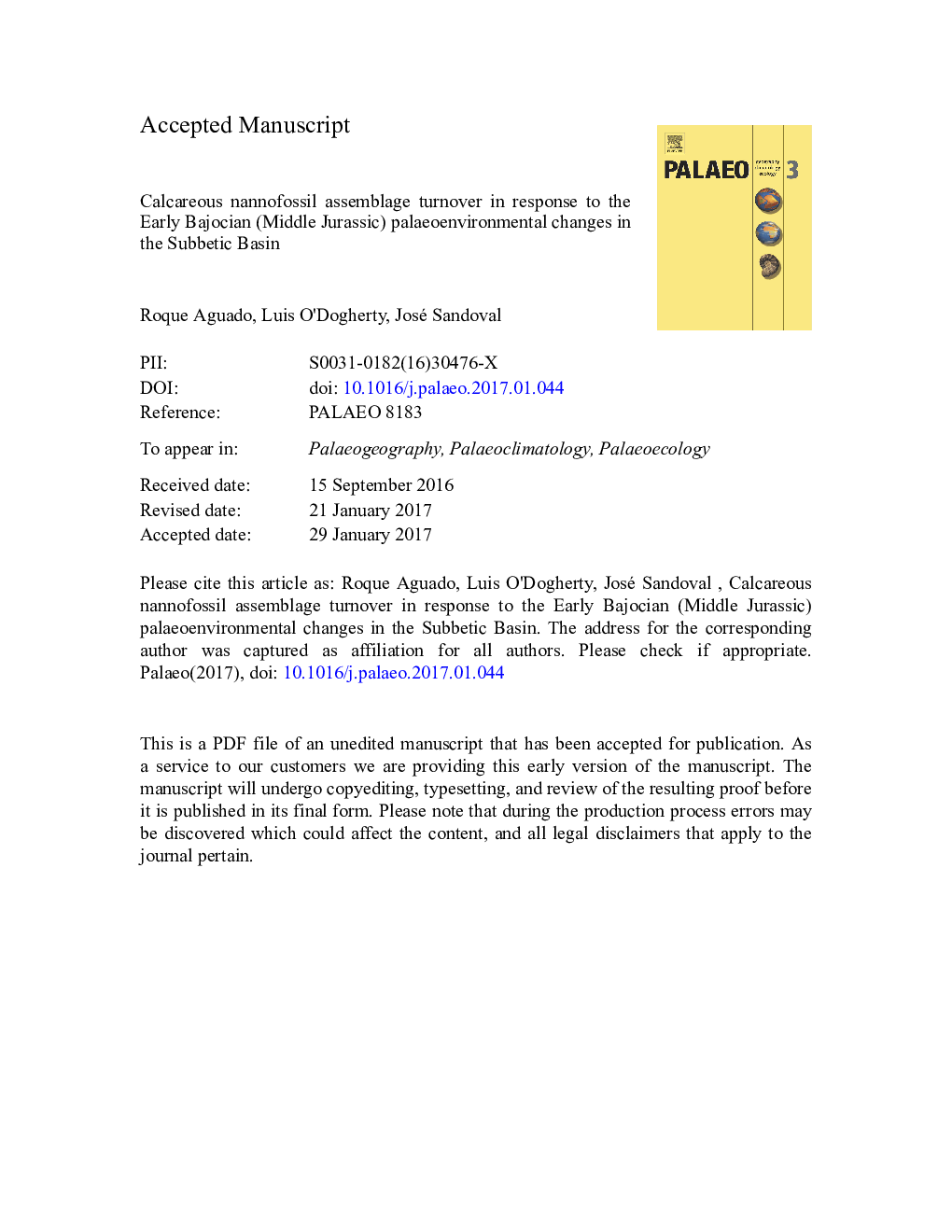| کد مقاله | کد نشریه | سال انتشار | مقاله انگلیسی | نسخه تمام متن |
|---|---|---|---|---|
| 5755867 | 1622120 | 2017 | 64 صفحه PDF | دانلود رایگان |
عنوان انگلیسی مقاله ISI
Calcareous nannofossil assemblage turnover in response to the Early Bajocian (Middle Jurassic) palaeoenvironmental changes in the Subbetic Basin
ترجمه فارسی عنوان
تغییرات مونتاژ مایع نانوسوفیلیس آهکی در واکنش به تغییرات محیط زیستی اولیه در ساحل ساببتیک
دانلود مقاله + سفارش ترجمه
دانلود مقاله ISI انگلیسی
رایگان برای ایرانیان
کلمات کلیدی
میکروپلایونولوژی، بیواستراتیگرافی، پالئوسکوئولوژی، چینه شناسی ایزوتوپ،
موضوعات مرتبط
مهندسی و علوم پایه
علوم زمین و سیارات
فرآیندهای سطح زمین
چکیده انگلیسی
The calcareous nannofossil assemblages from three Lower Bajocian pelagic successions from the Subbetic Basin, well dated by ammonites, have been investigated. Biostratigraphically, they encompass the NJT9 to NJT10a nannofossil Tethyan zones. PCA factor analysis, performed on percentage abundances of selected taxa, suggests that the main factors controlling the Early Bajocian nannofossil assemblages of the Subbetic Basin were trophic level (nutrient availability) and nutricline depth. A gradual eutrophication is recorded in the calcareous nannofossil assemblages through an increase in the percentage abundance of Watznaueria spp., especially in the taxa best adapted to unstable and more eutrophic conditions (W. britannica gr. and W. manivitiae gr.). This eutrophication is concomitant with a trend of increasing carbonate δ13C values over the Early Bajocian, and a rise in biogenic silica production and deposits in the study sections and other basins of the Western Tethys. Around the middle part of the Laeviuscula Subzone, a decrease in the absolute and relative abundance of the deep-dwelling taxa (especially Crepidolithus crassus) suggests a deterioration of the environmental conditions in the lower photic zone. This has been interpreted as caused by a nutricline shallowing and/or greater turbidity that could be related, in turn, to surface-water stratification. Two different episodes have been differentiated in relation to nutricline dynamics: 1) from the latest Aalenian to earliest Early Bajocian, a weak and/or deep nutricline with nutrients rather uniformly spread throughout the photic zone, and concomitant with mesotrophic conditions and increasing productivity is suggested; 2) a shallowing of the nutricline and/or increase in surface-water turbidity, concomitant with more eutrophic conditions is suggested for the latest Early Bajocian. The observed decrease in the deep-dwelling taxa supports the hypothesis of a climatically driven fertilization of the surface waters instead of fertilization by upwelling for the Early Bajocian eutrophication episode.
ناشر
Database: Elsevier - ScienceDirect (ساینس دایرکت)
Journal: Palaeogeography, Palaeoclimatology, Palaeoecology - Volume 472, 15 April 2017, Pages 128-145
Journal: Palaeogeography, Palaeoclimatology, Palaeoecology - Volume 472, 15 April 2017, Pages 128-145
نویسندگان
Roque Aguado, Luis O'Dogherty, José Sandoval,
